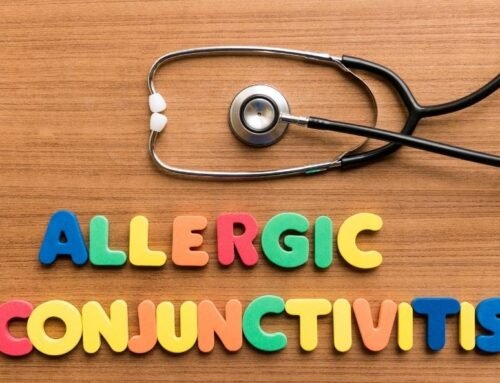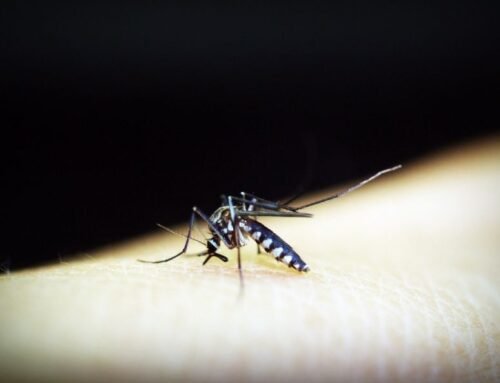The influenza vaccination season has come again and discussions have started about the benefit of the vaccine and whether it should be made in our country. Rightly, parents are also very confused and indecisive. In this article, we aimed to provide the necessary information about the flu vaccine in the light of the latest scientific data and to enlighten the issue of who should be given the flu vaccine.
What is Flu?
Influenza is an infectious disease that usually spreads between October and May. It causes millions of children to get sick every year.
Flu is caused by viruses called influenza. Anyone can get the flu. Flu progresses with sudden onset of fever, cough, runny nose, sore head and muscle pain, and exhaustion.
Why Is Flu Important?
Flu disease is one of the diseases that cause serious consequences in children. Although the majority of pediatric patients survive the disease without any problems, it can be dangerous, especially in young children, the elderly, pregnant women and those with any underlying disease. Approximately one in 100 of the flu cases seen result in death. Hospitalization and death are more common in those under 5 years of age, especially under 2 years of age. Flu can cause pneumonia, kidney failure, inflammation of the heart and brain, and triggers of asthma. These conditions are more common in people with immune system disorders and any chronic diseases.
Who Are Children at Risk of Severe Influenza?
– Children aged 6 months to 5 years
– Chronic lung disease (eg asthma), cardiovascular disease (excluding isolated high blood pressure), kidney, liver, nervous and blood or metabolic diseases (eg diabetes)
– Children with impaired immunity
– Aspirin users
– Those who stay in the nursery
– Those who are very fat
What are the Types of Flu Vaccine?
Flu vaccines are in 3 types: inactive (dead), live and recombinant (with DNA technology). In our country, only inactive (dead) vaccines are available today. There is no live virus in the inactive vaccine. There is only a certain part of the virus to stimulate immunity. In recent years, 4-virus (Quadrivalent) vaccines with wider efficiency have been introduced. However, it is still used in three-virus (trivalent) vaccines and there is no recommendation of scientific authorities for preference of any of them.
What is the protection of the Flu Vaccine?
In our society, debates on the effectiveness of the flu vaccine have been going on for years. In the studies conducted, the protection rate of inactive (dead) vaccines in children was found to be 43-91%. Live vaccine maintains similar rates. The vaccine is also very successful in preventing the severity of the flu. It reduces the intensive care admission of children with flu by 74%. It also reduces deaths by 65%. As can be seen, the results show that it is very effective.
Who Should Get the Flu Vaccine?
It is recommended for all people older than 6 months who do not trouble with having flu vaccination. Since nearly half of the patients who died during flu epidemics were healthy people without any underlying disease, it was recommended to those who previously had a disease that would only cause the flu to be more severe, and it was recommended to be applied to healthy children since the 2004-2005 season.
What is the time and dose of the flu vaccine?
It should be done every year because the influenza factors change from year to year and do not leave permanent immunity. It is recommended that the vaccine released in September is made until the end of October. But it can be done later. The most common periods of flu germs can be from January to February in different regions. Its protection starts 2 weeks after the flu shot is given and continues throughout the season.
If the flu vaccine is administered to children between 6 months and 8 years for the first time, 2 doses should be administered with an interval of 1 month. It should be continued as a single dose in later years. Although it is applied for the first time to those older than 8 years, it should be administered as a single dose.
Until 2016, children between the ages of 6 and 35 months were given half a dose. However, studies have shown that giving them a full dose is more effective. However, it will be appropriate to determine the dose after checking the package insert of the vaccine to be administered, since there is still a half-dose recommended vaccine.
Can Children With Egg Allergy Get The Flu Vaccine?
Although there are vaccines produced differently, both dead and live flu vaccines that we use today are produced in egg culture and the egg contains protein residue. However, it is not possible to cause a serious reaction because the amount is too low. Although the vaccine package insert is not recommended for children with egg allergy, the American Academy of Pediatrics (AAP), ACIP (Immunization Practices Advisory Committee) and CDC (Center for Disease Control and Prevention) state that there is no harm in administering flu vaccine to children with egg allergies. It is stated that ACIP and CDC do not require any special prevention if there is only hives, but if there is any reaction in those with a history of more severe reactions (which may be any component of the vaccine, regardless of the egg), it should be done under the supervision of a doctor in a place where there are medications to intervene. The AAP states that all children with egg allergy, regardless of severity, can receive a dead or alive vaccine without any additional precautions beyond those recommended for any vaccine.
Recombinant (DNA technology) vaccines do not contain egg protein, but are not currently available in our country.
What Are The Situations That The Flu Vaccine Should Not Be Made?
– Allergy to any ingredient in the vaccine
– A life-threatening allergic reaction after a vaccine dose is given
– It should not be done in case of an acute illness with moderate to severe fever or no fever. However, mild disease does not prevent vaccination.
– If Guillain-Barré syndrome develops within 6 weeks after the flu vaccine is administered, caution should be exercised in subsequent doses.
As a result;
– Flu or influenza, is a disease that usually spreads between October and May and can be severe.
– Children between the ages of 6 months and 5 years and with chronic illnesses (such as asthma) and immunocompromised children are at risk of severe influenza.
– There are 3 types of flu vaccine: inactive (dead), live and recombinant (with DNA technology). There is only inactive (dead) vaccine in our country.
– The protection of inactive (dead) vaccines against influenza in children was found to be 43-91%.
– Flu vaccination is recommended for all people over 6 months of age.
– It is recommended that the vaccine released in September is made until the end of October.
– If the flu vaccine is given to children between 6 months and 8 years for the first time, 2 doses should be administered with an interval of 1 month. It should be continued as a single dose in later years. Although it is applied for the first time to those older than 8 years, it should be administered as a single dose.
– It is stated that children with egg allergy are safe from flu vaccination.
– Inactive (dead) flu vaccine can be given with other vaccines.
– People who are allergic to any substance in the vaccine and those who develop anaphylaxis (allergic shock) after vaccination should not be vaccinated.
Important note:
Pediatric allergy-immunologists for immunological-allergic diseases in children, adult allergy-immunology specialists in adults have specialized and they are doctors who are experienced in this field and have a diploma. Patients who are considered allergic to influenza vaccine should be evaluated by an immunology and allergy specialist.






